Make authentic Kung Pao shrimp at home with this easy recipe. Learn the seasoning ratio and cooking procedure for the perfect balance of spicy, sweet, and sour flavors.
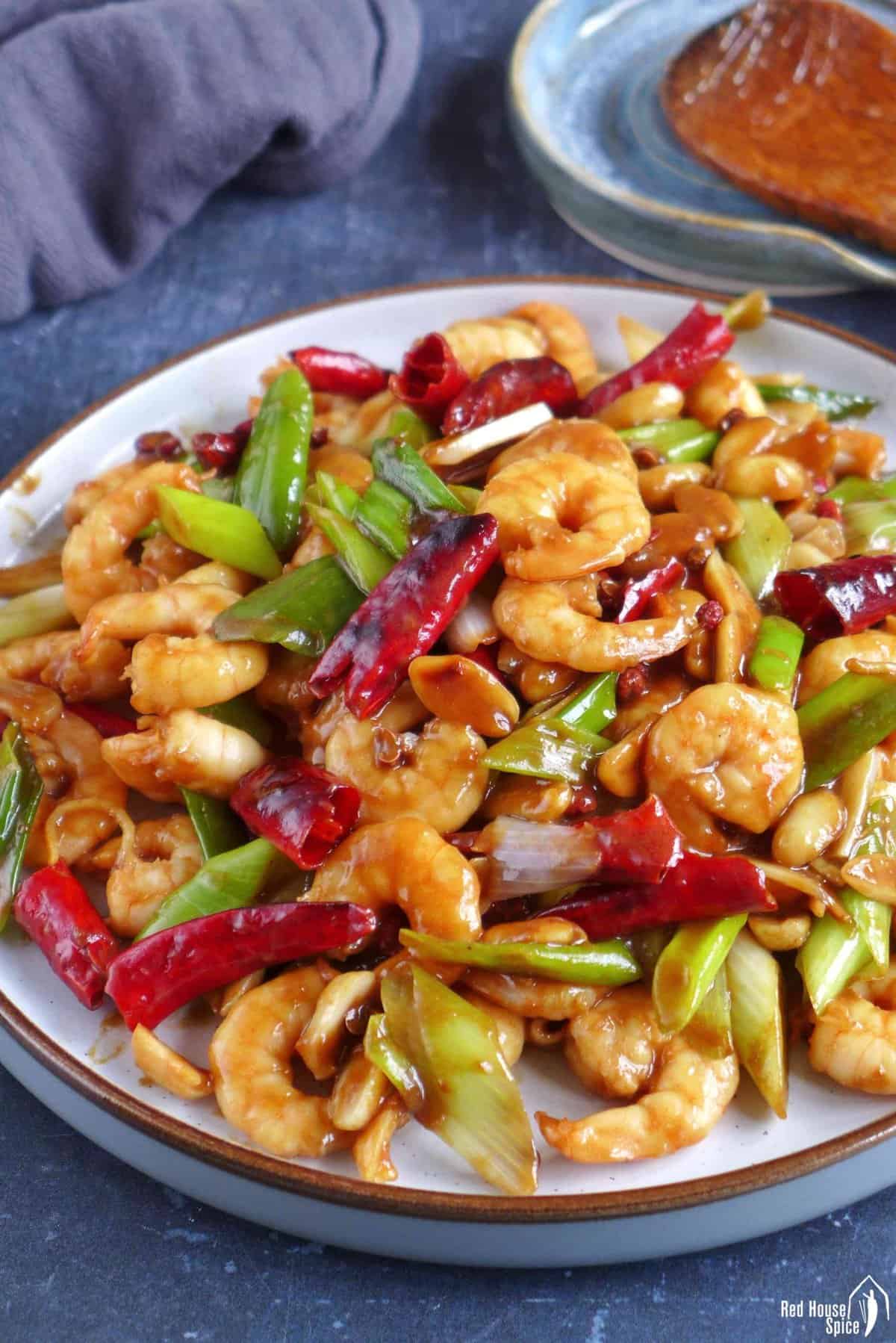
Jump to:
Note: This is a revised version of my post published in 2017. It provides more tips and process shots.
What is Kung Pao Shrimp?
If you’re a fan of Chinese cuisine, particularly Sichuan food, it’s highly likely you’ve heard of or tasted Kung Pao dishes. While Kung Pao chicken is the most famous, today’s recipe for Kung Pao shrimp is another one worth trying.
Known as Gōng Bào Xiā Rén/宫保虾仁 in Chinese, this signature Sichuan dish features briefly stir-fried, crunchy shrimp, toasted peanuts, and chunks of scallions, all flavored with dried chili and Sichuan pepper, coated in a sticky savory sauce.
The combination of these elements creates a complex taste in your mouth, with spicy, mouth-numbing, smoky, sour, sweet, garlicky, and aromatic flavors all coming together.
Original vs adapted version
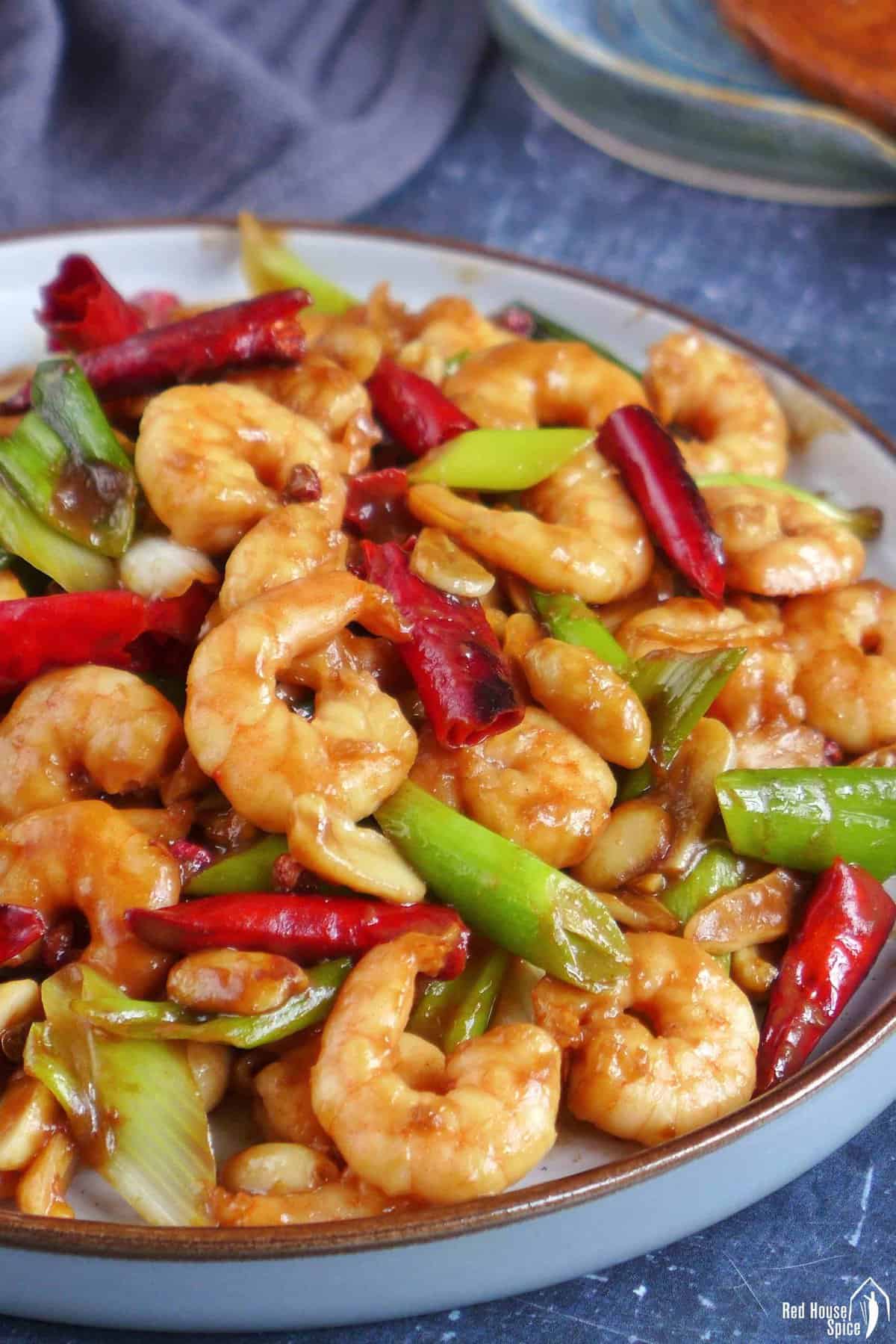
I created and tested this recipe with the aim of reflecting the original version of this iconic dish. You may find that it’s quite different from the version you get from your local Chinese takeout or restaurants.
Based on my experience, the adapted version tends to be sweeter, less spicy, and saucier. Also, it may use vegetables that aren’t traditionally included.
My advice is to try my recipe as it is and then adjust it based on your own preferences. For example, you can reduce the amount of chili, increase the sauce quantity, or add your favorite vegetables.
Ingredients & substitutes
SHRIMP (PRAWNS)
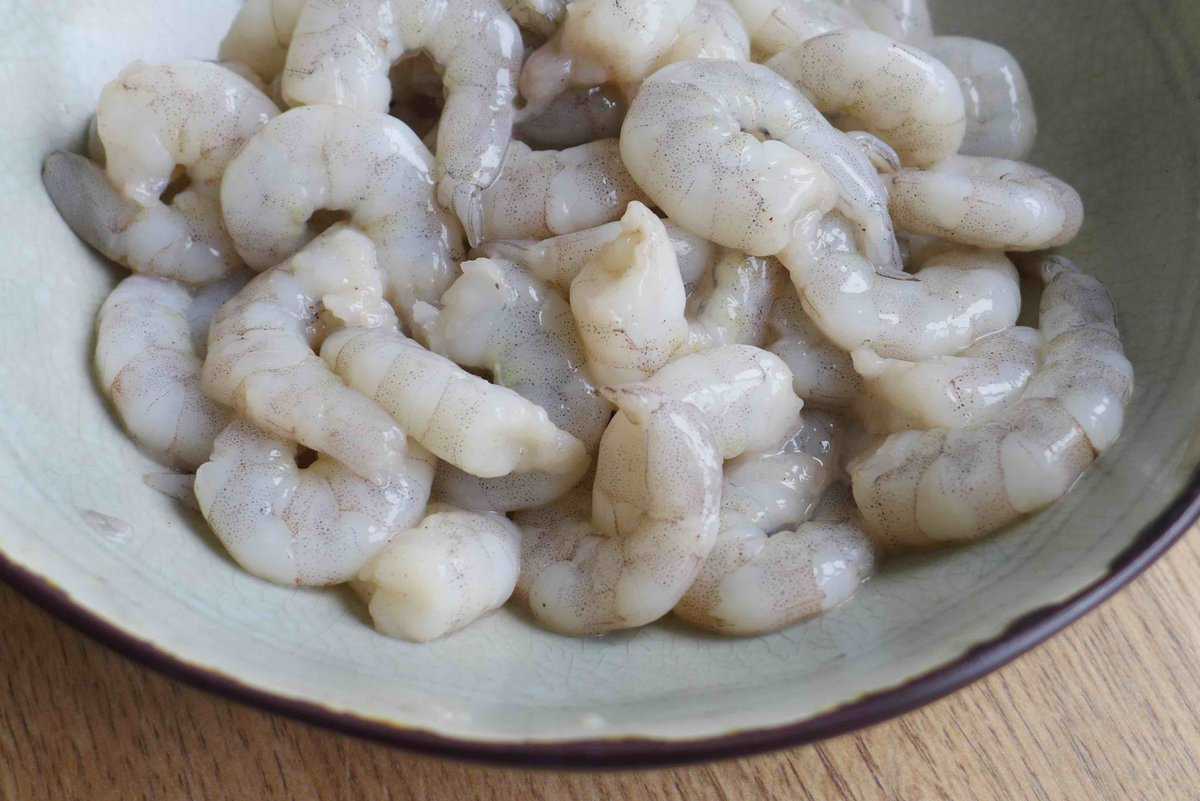
Use headless and skinless shrimp for this recipe, either fresh or defrosted. Deveining the shrimp is optional, and you can skip this process if you find it time-consuming and the veins are not pronounced (especially for small-sized shrimp).
🛎 Note on shrimp & prawns:
Shrimp and prawns are technically two different types of seafood. They have some subtle differences in appearance and flavor that may be more noticeable to seafood experts than to home cooks.
In the US, people use the term “shrimp” for both shrimp and prawns, while in the UK, the word “prawn” is more commonly used for both. For this recipe, you can use either type that’s available to you.
NUTS
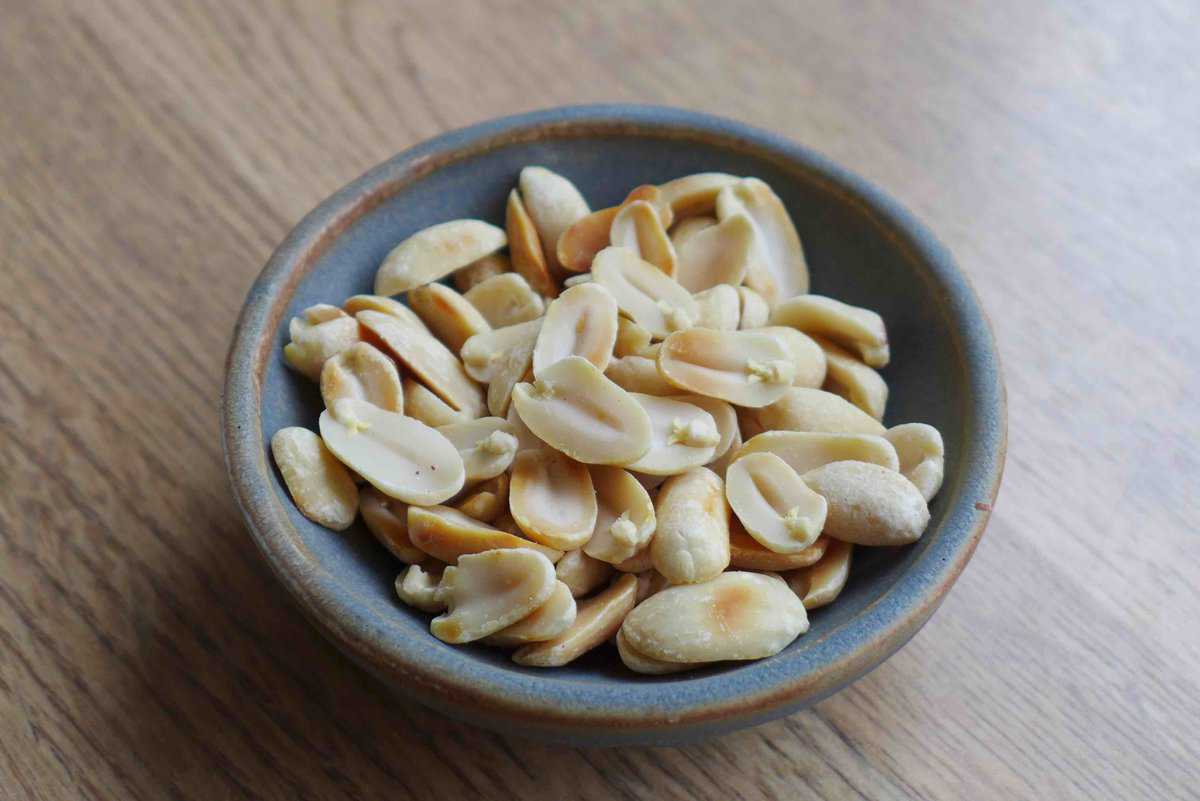
The original version of Kung Pao shrimp calls for skinless peanuts. They add a nutty flavor and a crunchy texture. Cashew nuts can be used as a substitute.
Allergic to nuts? Skip peanuts or use chunks of water chestnuts if available (Despite the name, they aren’t a nut but come from a plant root).
SPICES
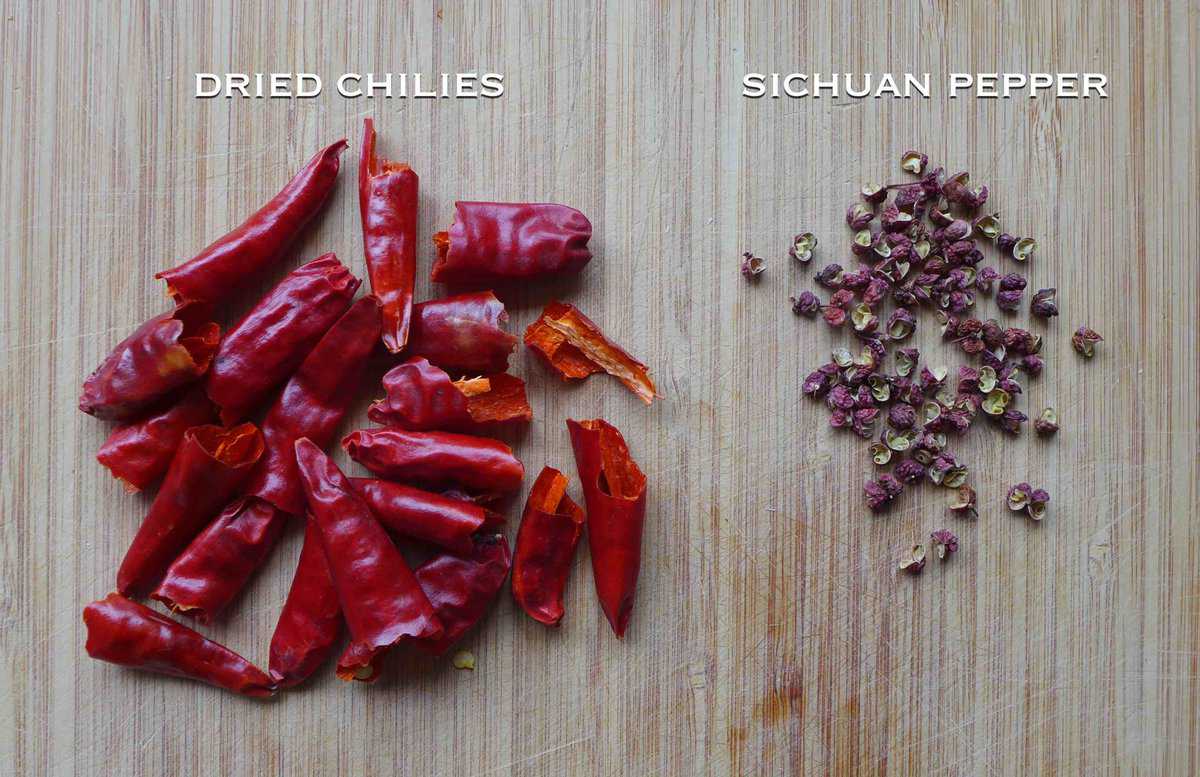
Dried chilies provide heat to this dish. You don’t need to limit yourself to the varieties produced in Sichuan or other regions of China. Other types would work too as long as their heat level suits your own tolerance.
Sichuan pepper, a unique Chinese spice often paired with chili, is called for in the authentic version of Kung Pao shrimp. It adds a mouth-numbing sensation which brings another dimension to the flavor profile. Whole Sichuan peppercorn is preferred but ground Sichuan pepper can be used as a substitute.
AROMATICS
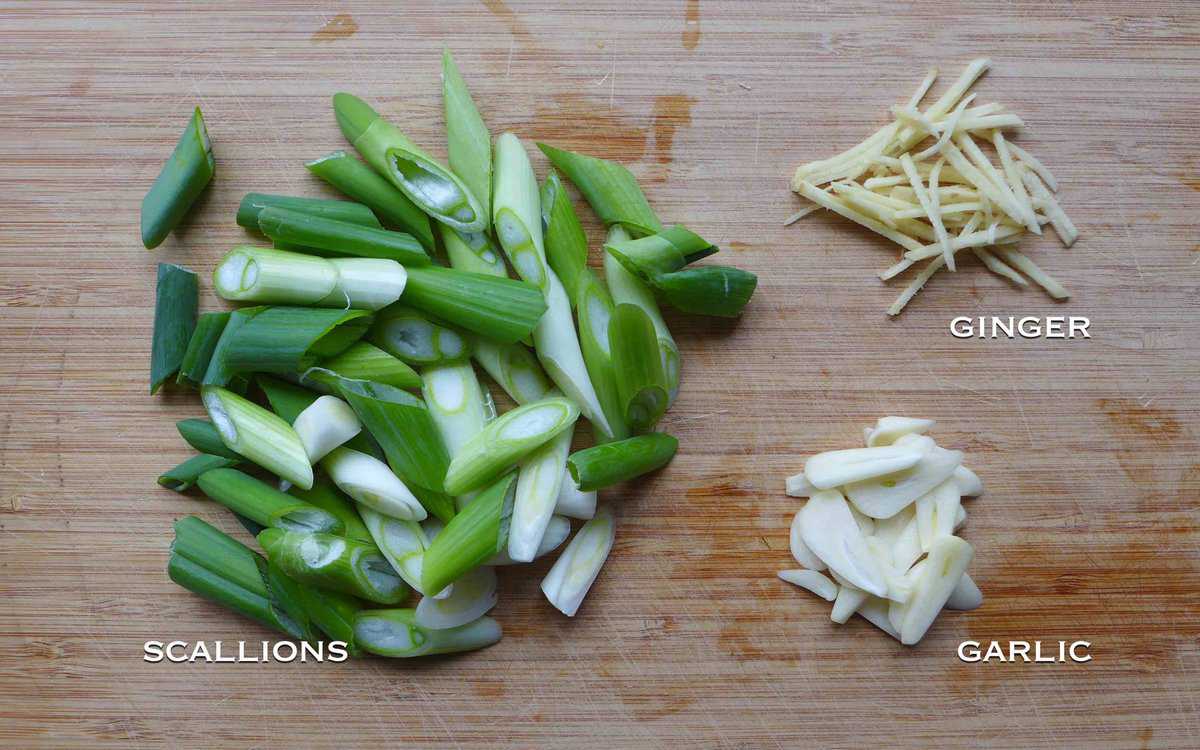
Fresh scallions, garlic, and ginger are the kitchen trio of Chinese cuisine. Also, scallions (aka green onion, spring onion) are used as a vegetable in this dish, so make sure to be generous.
SEASONINGS
Here is a list of common Chinese condiments that you need:
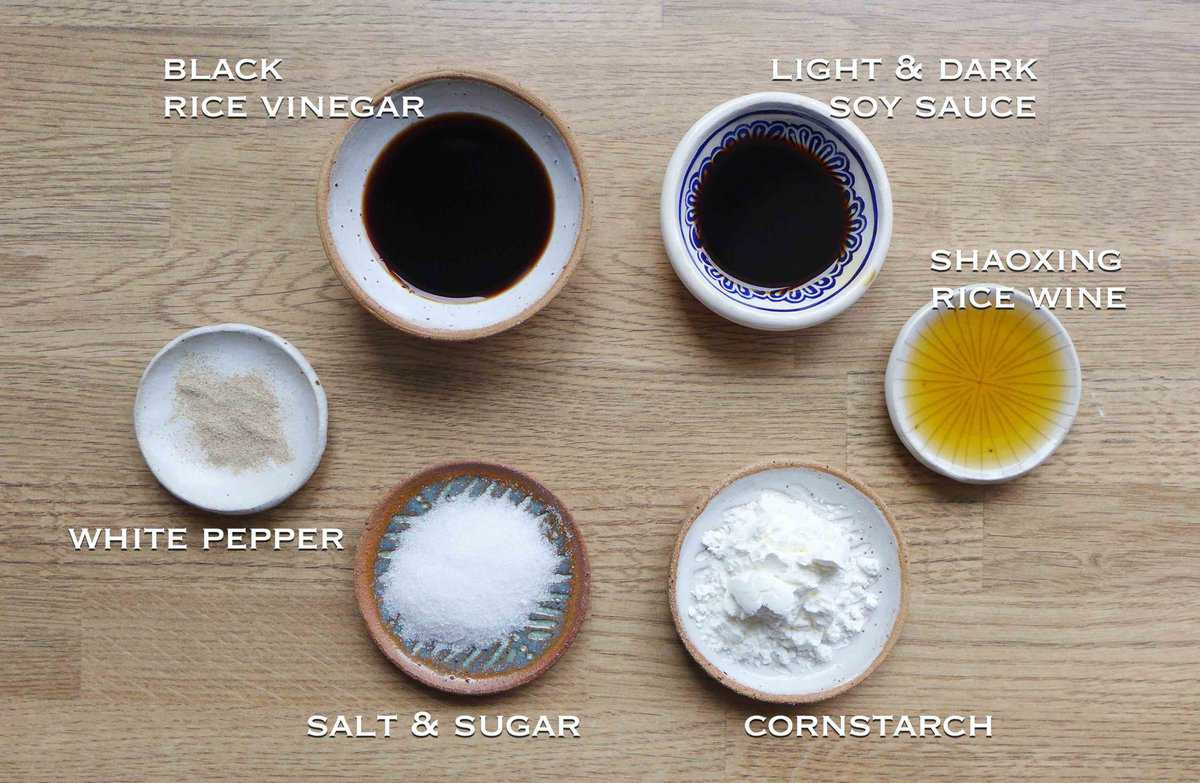
- Black rice vinegar. Chinkiang (Zhenjiang) vinegar/镇江香醋 is a very good variety. I don’t recommend you use white rice vinegar or other types for this dish.
- Soy sauce. I combine the light and the dark versions. It’s fine to use only the light one (or the one simply labeled as soy sauce).
- Shaoxing rice wine. It’s great for balancing the fishy taste of seafood.
- Cornstarch. It’s used to tenderize the shrimp as well as thicken the sauce.
- Sugar. It’s for pairing with vinegar to create a “sweet and sour” taste.
- Salt & white pepper
VEGETABLES (optional)
Kung Pao shrimp found in overseas Chinese restaurants often include vegetables like bell pepper, chili pepper, onion, etc. If that’s what you prefer, feel free to add some (you’ll need to increase the sauce quantity accordingly).
Cooking instructions
Here are 4 simple steps to cook this Kung Pao shrimp recipe.
Step 1: Marinate the shrimp
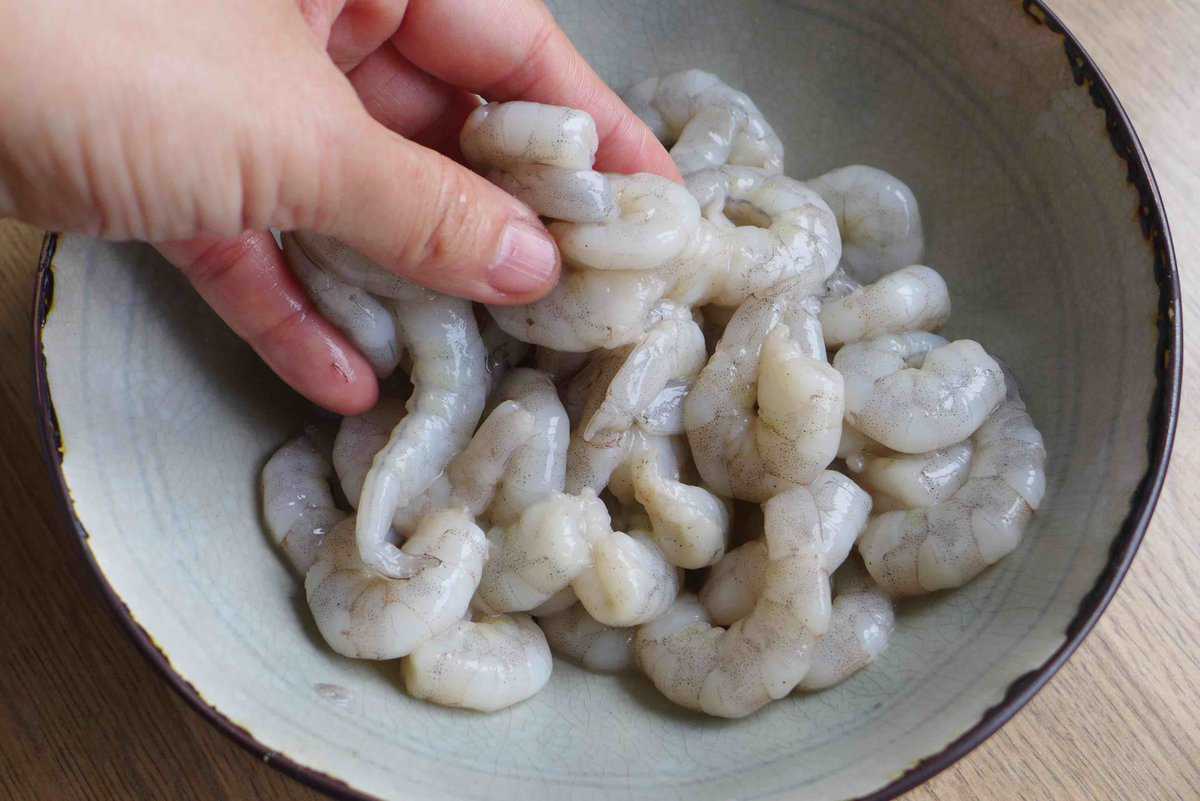
Mix shrimp with Shaoxing rice wine, cornstarch, white pepper, and a little salt. Rubbing with your hands is an efficient way to coat evenly. Leave to marinate for about 5 minutes.
Step 2: Mix the sauce
When making a quick stir-fry, it’s crucial to mix the sauce before you start cooking. Otherwise, you run the risk of burning the food while trying to get and measure out the condiments.
In a small bowl, mix black rice vinegar, light soy sauce, dark soy sauce, Shaoxing rice wine, sugar, cornstarch, and water. Set aside.
🛎 Note: The sauce mixture that I use for this recipe is enough to give all the ingredients a nice coating. However, feel free to double the quantity if you prefer an extra saucy dish.
Step 3: Toast the nuts (skip this step if your nuts are already roasted)
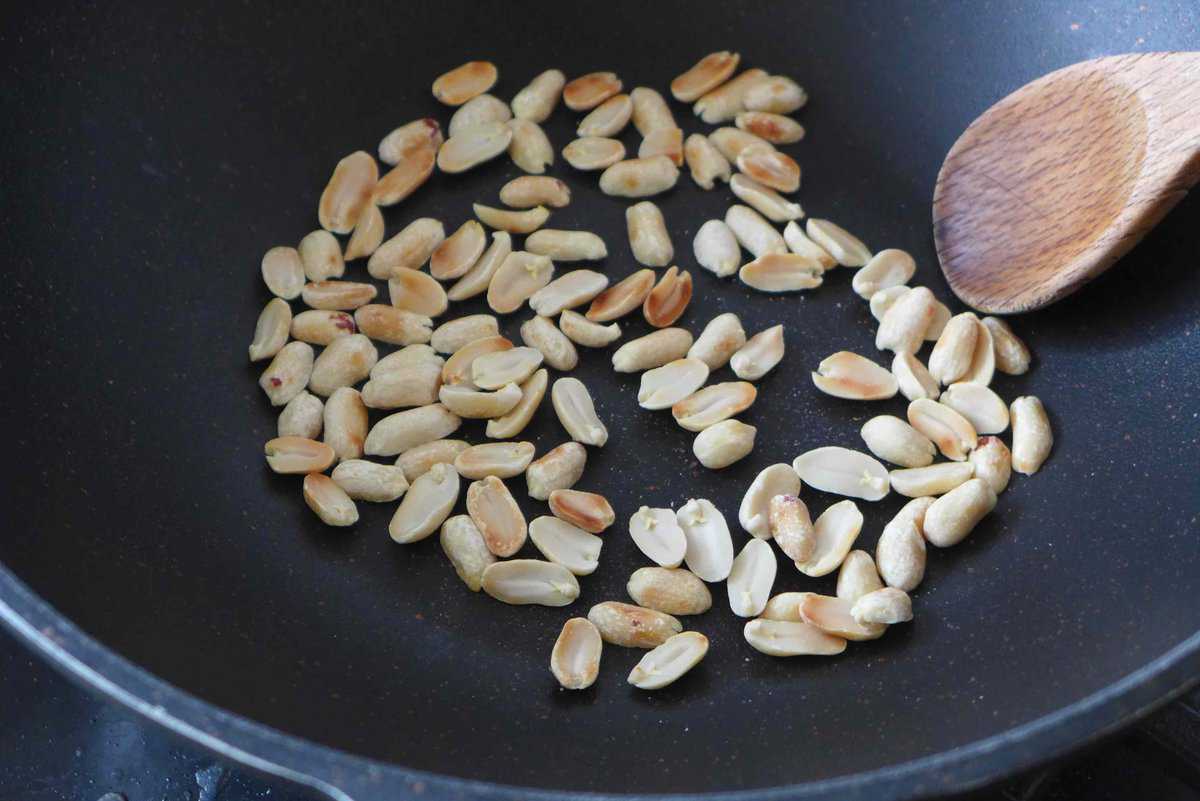
Add raw, skinless peanuts (or cashew) to an empty wok/skillet. Turn on the heat to medium-low and toast them until they turn slightly brown. Transfer out and set aside.
Step 4: Stir-fry the dish
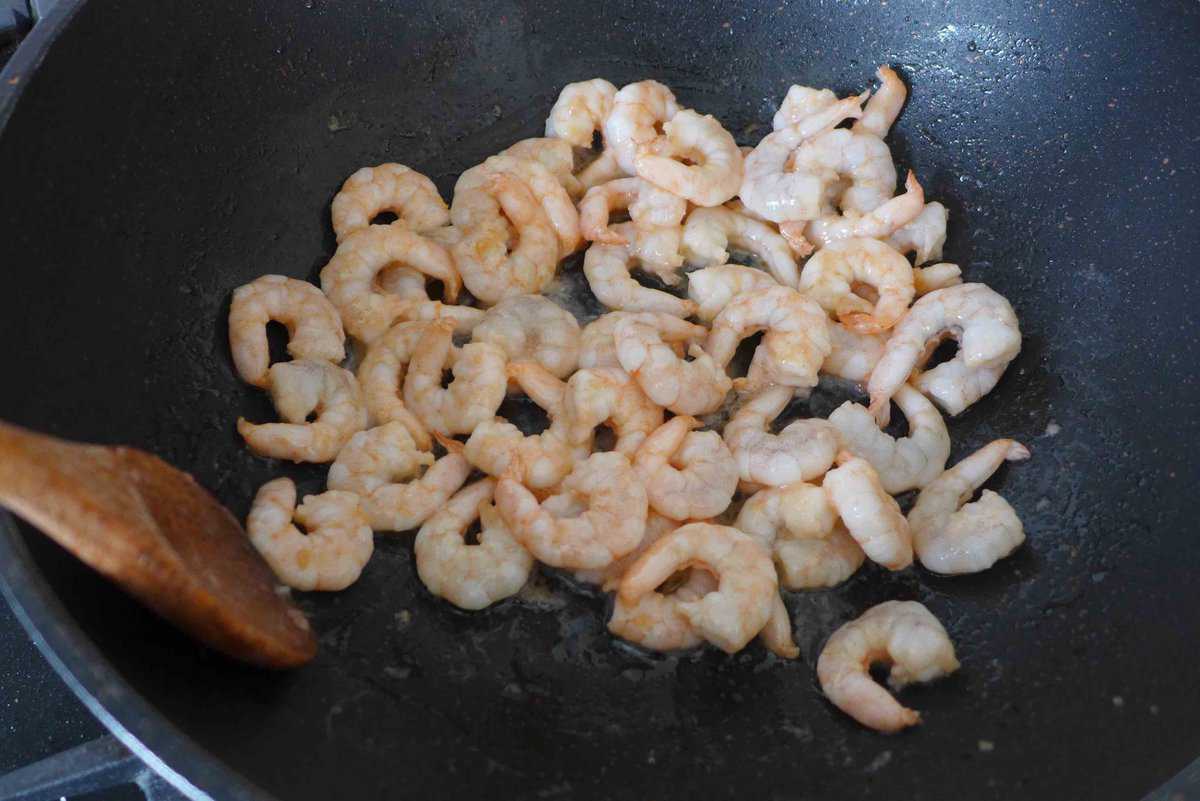
Heat oil in a wok/skillet over medium-high heat. Add the marinated shrimp and toss it constantly. Dish out as soon as the shrimp curls up and turns pink, taking care not to overcook it. This process only takes a very short amount of time. Being attentive will help to retain the crunchiness of the shrimp and avoid a chewy texture.
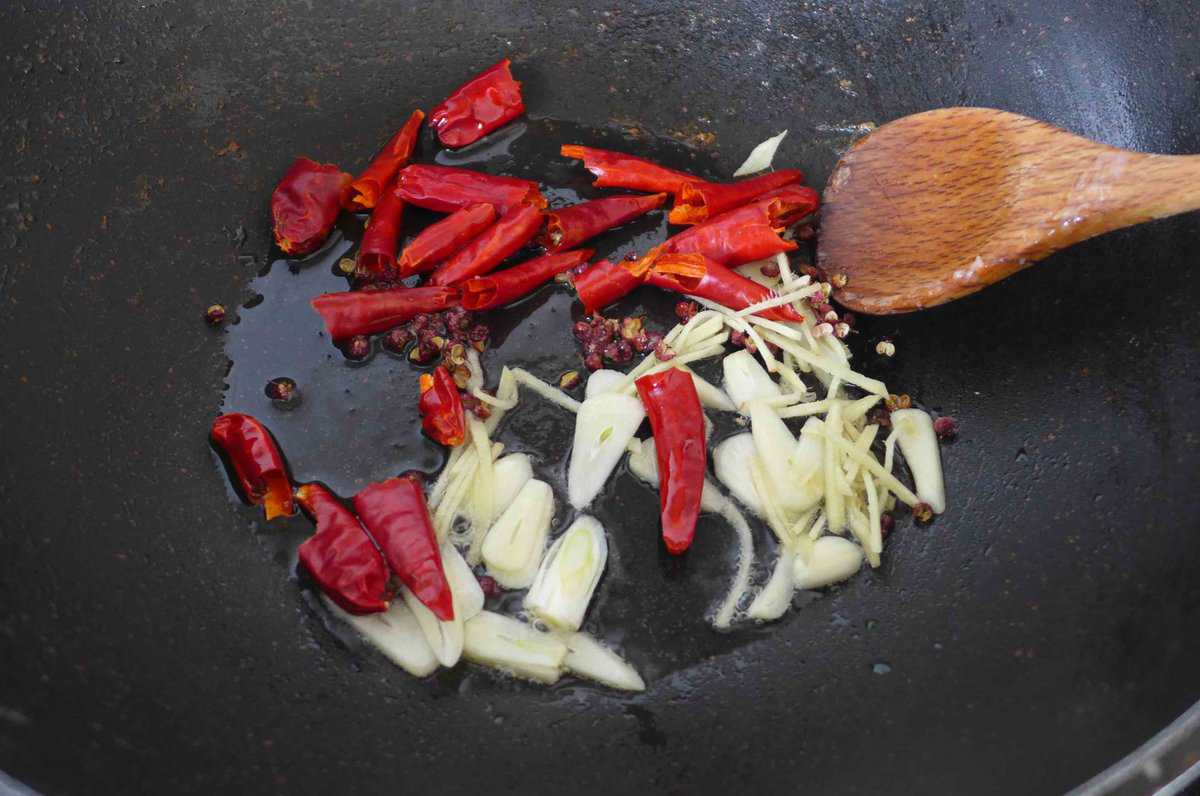
Use kitchen paper to wipe clean the wok/skillet, then pour in the oil. Stir in dried chili, Sichuan pepper, sliced garlic, and julienned ginger. Fry over medium-high heat until they become fragrant (Be careful not to burn the chilies).
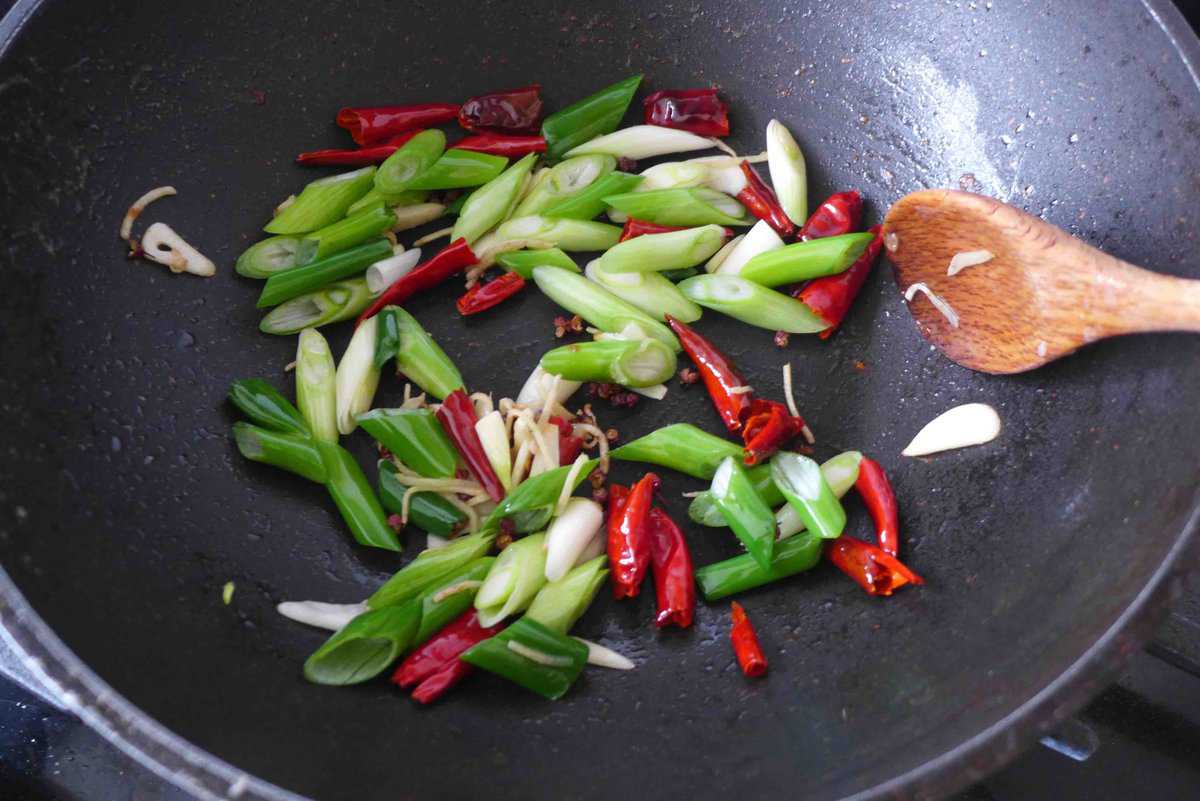
Next, add chopped scallions and fry for about 30 seconds.
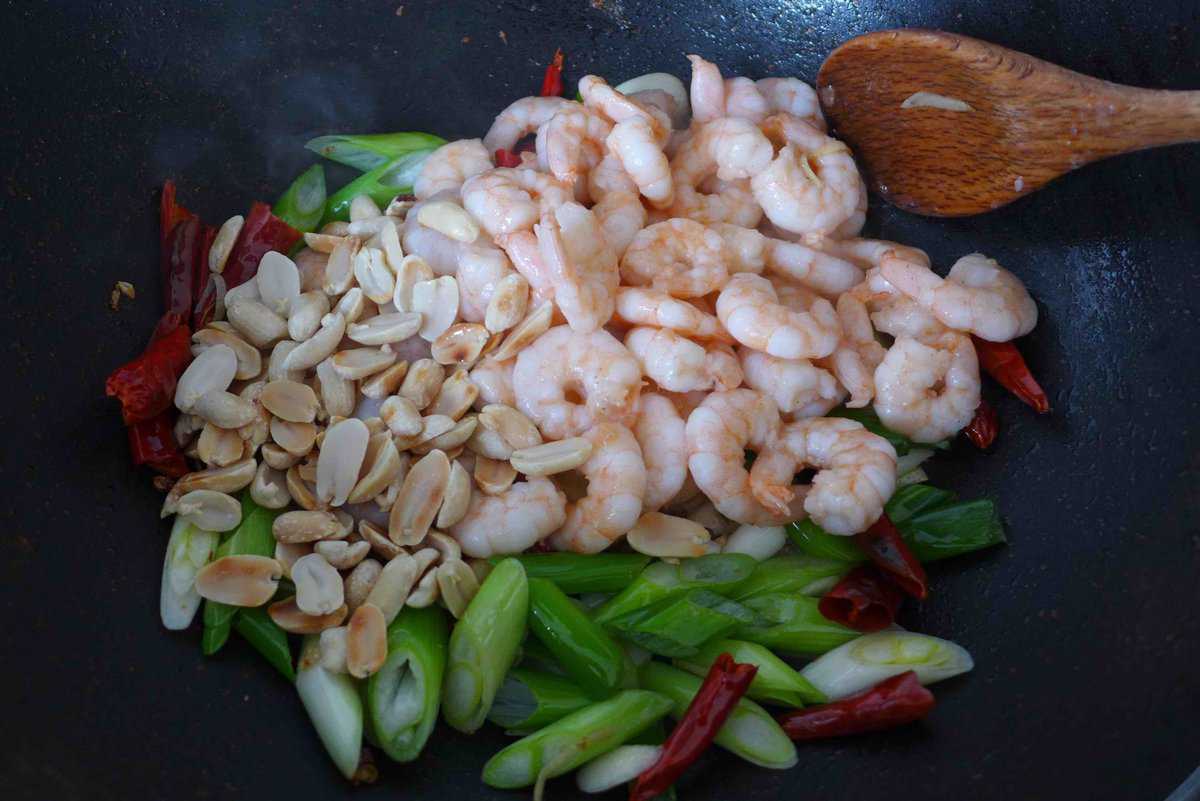
Return the shrimp to the wok/skillet, along with the toasted nuts.
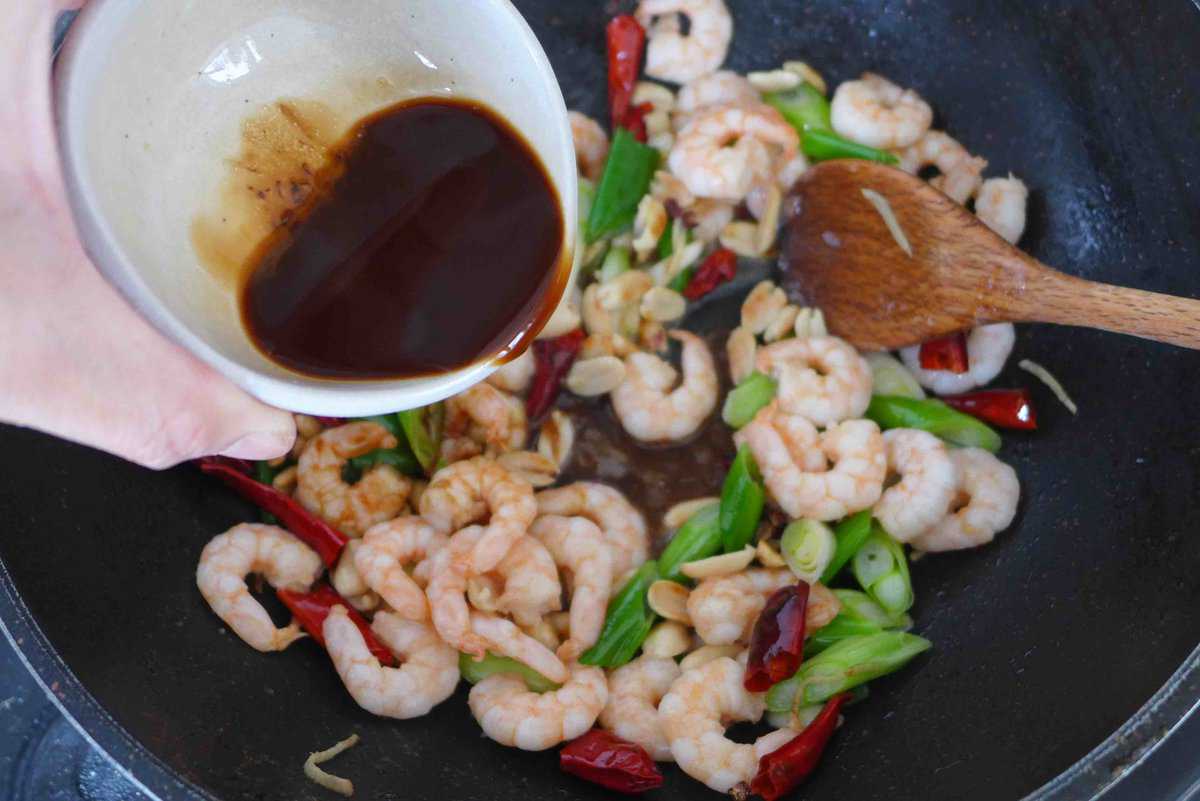
Then pour in the sauce mixture (make sure to stir it well as the starch tends to sink to the bottom).
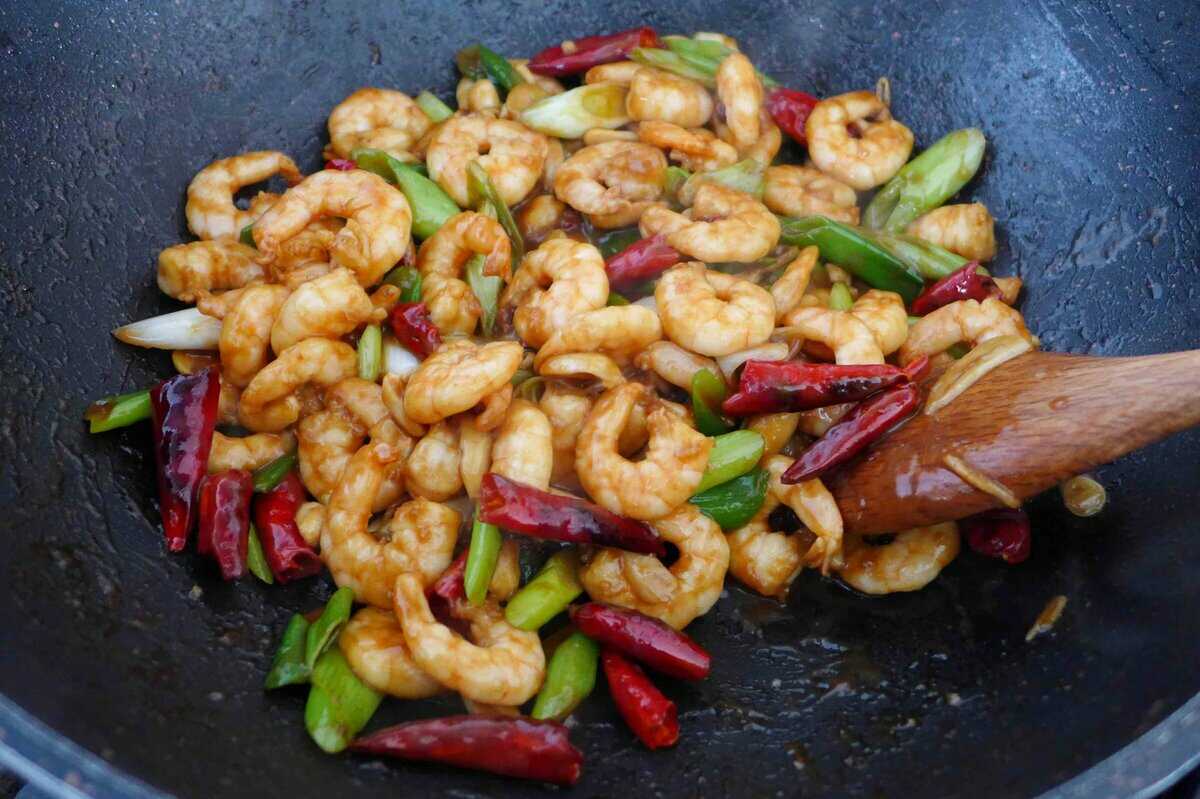
Quickly toss and mix everything. Once the sauce thickens, dish out the stir-fry without delay.
How to serve
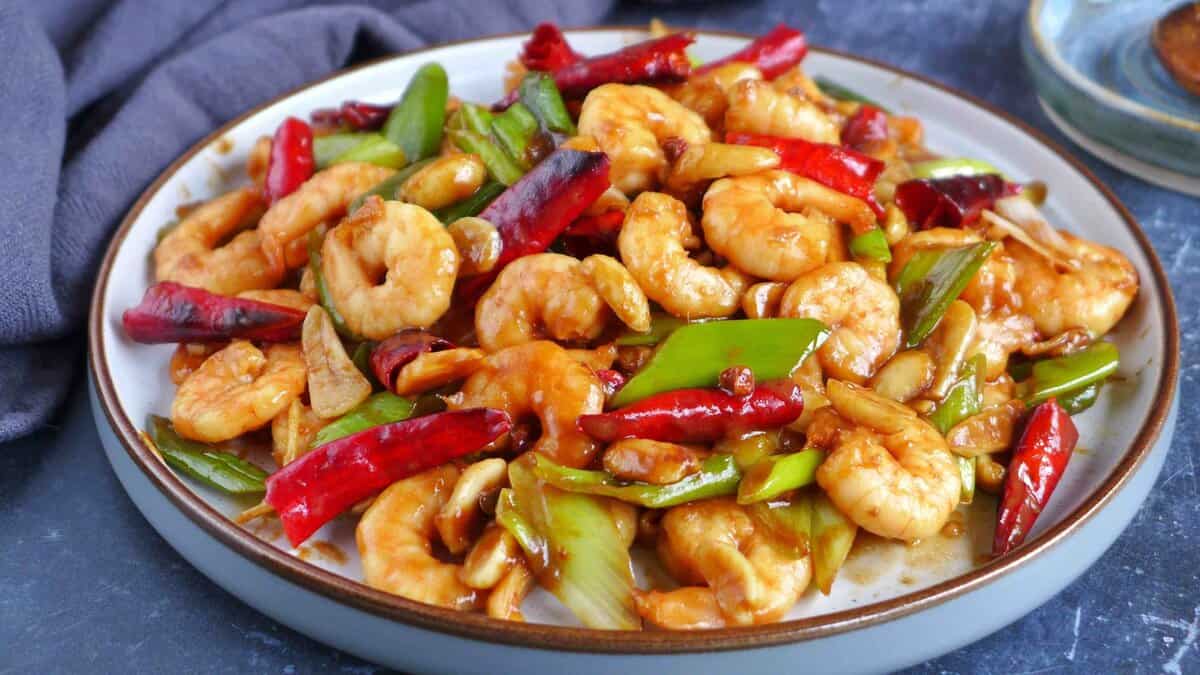
Kung Pao shrimp is commonly served with plain steamed rice, along with other savory dishes. I often pair it with a dish using other types of protein (e.g. Scallion Pork Chops, Cumin Lamb Stir-fry) and 1-2 vegetable dishes (e.g. Smashed Cucumber, Garlic Sauce Mushroom).
It works as a topping for noodles too. In this case, you may wish to double the quantity of the sauce so that the noodle strands can be nicely coated.
🛎 Note: The dried chili and whole Sichuan peppercorn contribute to the iconic flavor profile of Kung Pao dishes. However, they are not supposed to be consumed as they can be overpowering and unpleasant to chew.
Recipe FAQs
A: Yes, you can. However, it’s important to bear in mind that to create the classic Kung Pao flavor, you need to use not only the condiment mixture but also the spices and aromatics that contribute to the overall taste.
A: You can reduce the quantity of the dried chilies, and be sure to remove their seeds before cooking.
A: Absolutely. It’s perfectly fine to use a large skillet/frying pan to cook this dish.
A: Too little cornstarch will result in a watery sauce, while excessive cornstarch will make the finished dish overly sticky. So, it’s important to follow the recommended condiment ratio. Additionally, the heat is also a factor. If it’s too high, the sauce will thicken too quickly.
A: While some recipes call for hoisin sauce, it’s not a condiment commonly used in authentic Sichuan cuisine. It’s fine to use it if you like its flavor, but keep in mind the dish won’t have the classic Kung Pao flavor.
Other shrimp recipes to try
Looking for more recipes using shrimp as the star ingredient? Here are some classics to try:
📋Recipe
Love this recipe? Please leave a 5-star 🌟🌟🌟🌟🌟 rating in the recipe card below & if you REALLY like it, consider leaving a comment as well!
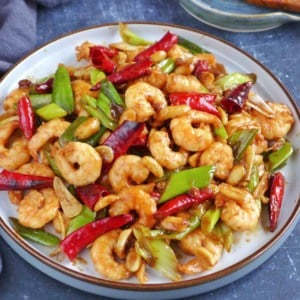
Kung Pao shrimp (宫保虾仁)
Ingredients
For the shrimp
- 11 oz shrimp - headless and skinless
- 1 teaspoon Shaoxing rice wine
- 1 teaspoon cornstarch
- 1 pinch salt
- 1 pinch white pepper
For the sauce (see note 1)
- 1½ tablespoon black rice vinegar
- 1 teaspoon light soy sauce
- ½ teaspoon dark soy sauce
- 1 teaspoon Shaoxing rice wine
- 2 teaspoon cornstarch
- 2 teaspoon sugar
- 1 tablespoon water
For the nuts
- ⅓ cup skinless peanuts - or cashew nuts (see note 2)
For stir-frying
- 2 tablespoon neutral cooking oil - divided
- 10 dried chilli - or to taste, halved and deseeded
- 1 teaspoon whole Sichuan peppercorn - see note 3
- 3 clove garlic - sliced
- 1 teaspoon julienned ginger
- 4 stalk scallions - diced
Instructions
Marinate the shrimp
- Put shrimp, Shaoxing rice wine, cornstarch, white pepper, and salt in a bowl. Mix well then leave to marinate for 5 minutes.
Prepare the sauce
- In a small bowl, mix light soy sauce, dark soy sauce, black rice vinegar, Shaoxing rice wine, sugar, cornstarch, and water. Set aside.
Toast the nuts (skip if the nuts are already roasted)
- Put raw peanuts (or cashew nuts) in a cold wok/skillet. Turn on the heat and toast the nuts over medium-low heat. Once they brown slightly, transfer them out and set them aside.
Stir-fry the dish
- Add 1 tablespoon of oil to a hot wok/skillet over medium-high heat. Stir in the marinated shrimp. As soon as it curls up and turns pink, dish it out (do not overcook).
- Wipe clean the wok/skillet with kitchen paper. Pour the remaining 1 tablespoon of oil. Add dried chili, Sichuan pepper, garlic, and ginger. Fry until fragrant (be careful not to burn the chilies).
- Stir in scallions. Fry for about 30 seconds. Then add the shrimp, toasted nuts, and the sauce mixture (stir well beforehand in case any starch has sunk to the bottom). Give everything a quick stir. Dish out when the sauce thickens to your desired consistency. Serve warm with steamed rice.
NOTES
NUTRITION
NUTRITION DISCLOSURE: Nutritional information on this website is provided as a courtesy to readers. It should be considered estimates. Please use your own brand nutritional values or your preferred nutrition calculator to double check against our estimates.


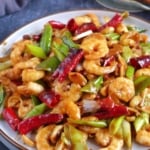

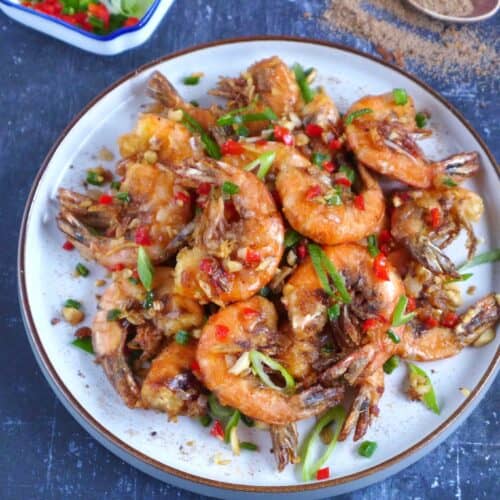
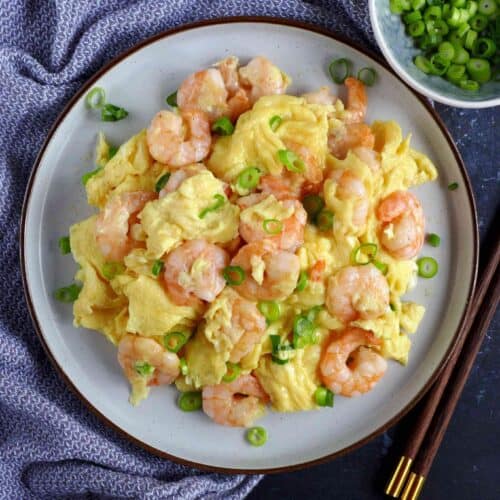
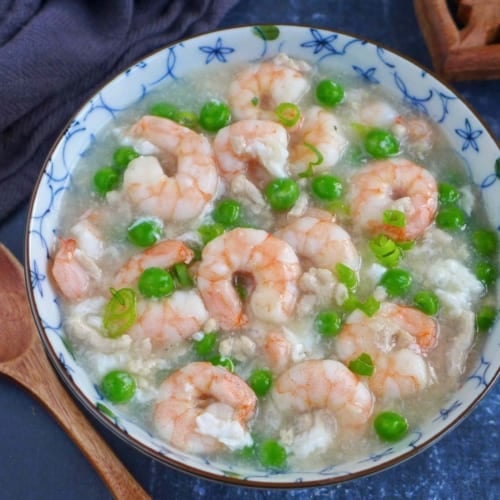
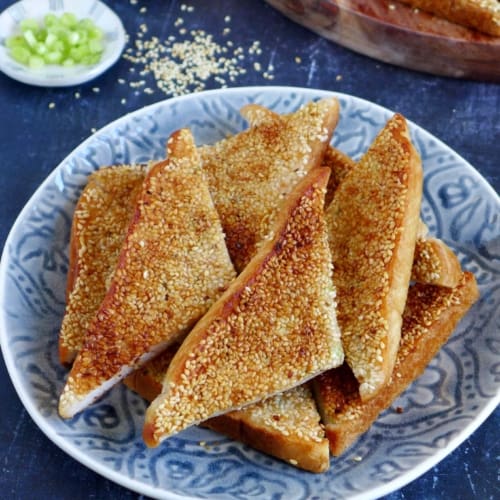
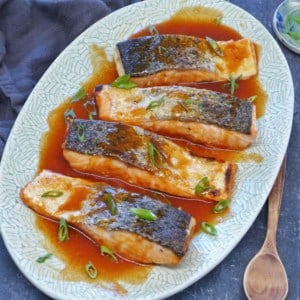
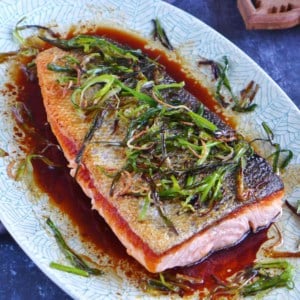
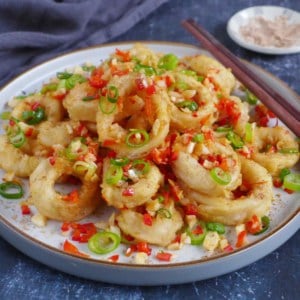
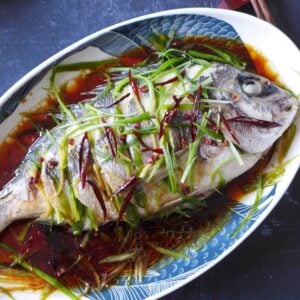
Now I know what Kung Pao is supposed to taste like! It’s alive with distinctive flavors. All previous versions I’ve had at restaurants and made at home were dead and lifeless in comparison.
This is a great example of why it’s worth learning how to make these dishes from masters like Wei.
Thank you very much!
So wonderful to read your feedback Deems! The support and appreciation I received from readers like yourself means a lot.
Greetings Wei
As always, as an older white male in NZ, I dial way back on the dried chilli and Sichuan pepper!
Both the shrimp marinade and the stir-fry sauce were as you described! I always have frozen shrimps/prawns on hand. This recipe is a keeper!
Thanks!
Glad you enjoyed this recipe!
Just made this for dinner tonight and it was delicious. As always, the instructions were clear and easy to follow. No special cooking skills required… easy to make. I used a bit more Sichuan pepper and Thai chilies than the recipe calls for because I enjoy it very spicy.
Yes John, a little more heat is always welcome. Glad you’ve enjoyed it.
Tried the kung pao shrimp , and must say it was super easy and delicious at the same time, Thank you for sharing your wonderful recipe
My pleasure to share Dalreen. Very happy that you’ve enjoyed!
I have cook this Kung Pao chicken and also used shrimp. It is the best recipe no doubt.
That’s great news Thad! Thank you for trying out my recipes. Happy cooking!
Looks delicious! Pinning!
Thank you and happy new year!
Wei
I agree with all the above!